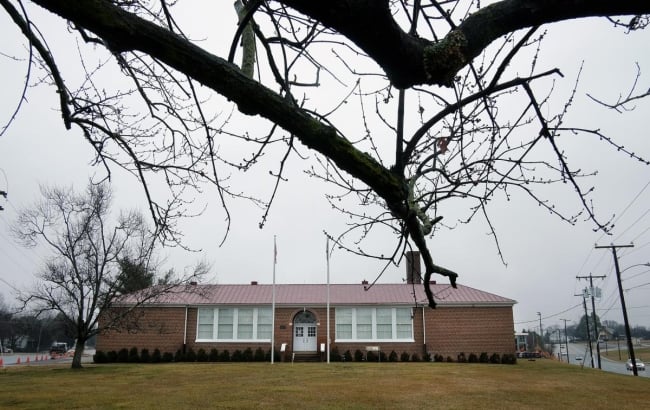You have /5 articles left.
Sign up for a free account or log in.

The Robert Russa Moton Museum in Farmville, Va., site of a 1951 student strike that helped launch the civil rights movement.
Norm Shafer/The Washington Post/Getty Images
Longwood University, a public liberal arts university located in a small, largely white, remote town in south central Virginia, is joining the ranks of colleges with a race and ethnic studies program.
Longwood approved a minor in race and ethnic studies that’s launching this fall in response to student demand. While it remains a predominantly white institution, the university has been diversifying its student body over the past 10 years, during which time the percentage of nonwhite students has risen from 15.8 percent to 25.5 percent. The university enrolls just under 5,000 students, including about 4,000 undergraduates.
David Magill, a professor and chair of the English and modern languages department who led the committee charged with developing the minor, said students initially proposed a minor in African American studies. After evaluating existing expertise on the faculty, he said it became clear Longwood didn’t have enough capacity to pull off an African American studies minor, but it did have the existing faculty expertise to develop a less specialized interdisciplinary program focused on race and ethnicity studies in a U.S. context. In addition to taking a newly developed introductory course, students will choose five other courses for the 18-credit minor from a variety of different departments.
“We’ve been wanting to find a way to do a program like this,” Magill said. “In my own department, we have slowly been trying to diversify the curriculum and trying to get more voices of different authors from different racial backgrounds. The fact that this took fire now, of course, given everything that’s going on in the world, it’s even more essential.”
Larissa Smith, Longwood’s provost, said the program was a product of “student interest as well as faculty recognizing that there was a need.”
“Those of us who have been engaged in teaching those courses have for a long time felt we needed something in our curriculum that would allow students to explore more broadly race and ethnic studies,” said Smith, a scholar of African American and Virginia history.
Located in the town of Farmville in Prince Edward County, Va., Longwood's campus is located at an important nexus for African American history.
“Farmville gets called often the place where the Civil War ended and the civil rights movement begins,” said Cainan Townsend, the director of education for the Robert Russa Moton Museum, a National Historic Landmark and museum focused on civil rights that’s affiliated with Longwood.
Townsend noted that the Battle of High Bridge took place just outside Farmville "mere days" before Confederate general Robert E. Lee's surrender at Appomattox, and Lee's retreat went through the town.
“Fast-forward in 1951, students at the segregated school in Farmville walk out on a strike on April 23, and they vow to not return until they’re given a brand-new school building,” Townsend said.
A court case that grew out of the student strike that happened 70 years ago last month at Moton High School became one of five cases considered by the Supreme Court in its landmark 1954 Brown v. Board of Education case, which declared segregation in public schooling to be unconstitutional. Prince Edward County subsequently closed its public schools for five years, from 1959 to 1964, rather than submit to a federal court order to desegregate its schools.
W. E. B. Du Bois, the sociologist and civil right activist, also wrote a sociological study, The Negroes of Farmville, Virginia, which predates his more famous works.
“You can see a direct correlation between certain portions of The Souls of Black Folks, Du Bois’s classic work, that are clearly coming from the research he did in Farmville,” said Spencer Tricker, an assistant professor of English at Longwood. “Sometimes being a regional university in a rural setting, you feel a little bit disconnected from the broader conversations. In Farmville, there are so many ways we can lean on that history and get students inspired.”
Tricker co-taught the newly designed introductory course in race and ethnic studies this spring with Shayla Betts, an assistant professor of social work.
“We are offering them something new here,” Tricker said. “We do an interdisciplinary look at the issue of race in America. Although other courses touch on those things, there isn’t really one specific forum in which they can think about these issues carefully.”
"When I reflect back on my own college experience, compared to these students, they seem more aware of these issues and are more interested in social justice concerns," he said. "I’m hoping that this program can provide a space in which they can explore those things."
Betts said there is a lot of ground to cover.
“When we think about race and ethnic studies, when we think about just systemically what the issues are, when we think about the different groups that are impacted, when we think about the intersectionality, when we think about the history of where we have been and where we are going, when we think about what do we do with this information, that’s a lot to include in a minor. That’s lot to really introduce our students to in an introductory course,” she said.
“We knew going forward that of course we wanted to really address some of the key concepts in terms of the history of race and ethnic studies, what that means. We want to talk about diverse groups, but we also really wanted to have a strong action piece in terms of what do we do with this information -- really thinking about social justice movements and strategic action.”
Betts also emphasized the importance of helping students have difficult conversations, a skill that's emphasized in the introductory course.
"We really emphasize at the beginning and throughout the course that there’s a difference between being uncomfortable and unsafe," she said. "We don’t want you to ever feel unsafe, but we’re kind of leaning into that discomfort. So if there is a time that you do feel unsafe, we have a safety word that we would use … Once we hear it we all stop, we pause, we take a break if need be. And if the person who initially said the word wants to share why, we can, but if we’re going to be safe, we’re not going to put that pressure on you to expose why you felt unsafe. We’re going to have difficult conversations -- that’s expected. But here’s how we navigate it, and how can we build the skills so that we can do the same things in other aspects of our lives."
The first race and ethnic studies programs at U.S. universities were established in the late 1960s and early 1970s at institutions such as San Francisco State University and the University of California, Berkeley. While the field is not new, colleges are increasingly facing pressures from students, especially students of color, to rethink their curricula to incorporate race and ethnic studies classes at a time when the country is grappling with racial justice issues and college campuses are increasingly at the center of debates about racial and income inequality.
A law signed last year by California governor Gavin Newsom mandates that all students in the 23-campus California State University system take a three-credit ethnic studies class before they graduate.
Ravi K. Perry, professor and chair of the politics department at Howard University and the immediate past president of the Association for Ethnic Studies, said he was not surprised to see a new program at a university like Longwood.
"The fact that I would say more rural, more white institutions are seemingly increasingly thinking about ways to diversify their curriculum is not necessarily a surprise," he said. "We can see how ethnic studies began and draw parallels between what’s going on in the world today. In the ’60s, ethnic studies started post the civil rights movement largely because students sought to have Black studies, Africana studies or whatever version we want to call it be offered in schools."
"My point in drawing the parallels to today is it all is fed from social unrest in society that students then pick up on and then place demands on their university administrators, who see to it that they get to learn about themselves and others like them while they are completing their studies," Perry said. "That is the reason for why we see the uptick in ethnic studies energy today."




